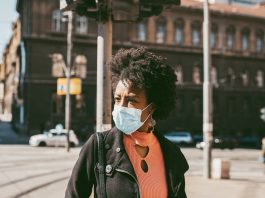A new study led by the University of Birmingham, suggests that the changes to urban air pollution during the first COVID-19 lockdown were much smaller than expected.
After assessing the impact of weather and seasonal trends, the researchers evaluated changes in ambient nitrogen dioxide (NO2), ozone (O3) and fine particle (PM2.5) concentrations arising from changes to urban air pollution as a result of lockdowns in 11 global cities: Beijing, Wuhan, Milan, Rome, Madrid, London, Paris, Berlin, New York, Los Angeles, and Delhi. The international team of scientists discovered that the beneficial reductions in NO2 due to the lockdowns were smaller than expected. In parallel, the lockdowns caused concentrations of ozone in cities to increase.
Zongbo Shi, Professor of Atmospheric Biogeochemistry at the University of Birmingham, said: “Rapid, unprecedented reduction in economic activity provided a unique opportunity to study the impact of interventions on air quality. Emission changes associated with the early lockdown restrictions led to abrupt changes in air pollutant levels but their impacts on air quality were more complex than we thought, and smaller than we expected. Weather changes can mask changes in emissions on air quality. Importantly, our study has provided a new framework for assessing air pollution interventions, by separating the effects of weather and season from the effects of emission changes.”
Publishing their findings today in Science Advances, the research team also reveals that concentrations of PM2.5, which can worsen medical conditions such as asthma and heart disease, decreased in all cities studied except London and Paris.
Co-author William Bloss, Professor of Atmospheric Sciences, added: “We found increases in ozone levels due to lockdown in all the cities studied. This is what we expect from the air chemistry, but this will counteract at least some of the health benefits from NO2 reductions. The changes in PM2.5 differ from city to city. Future mitigation measures require a systematic air pollution control approach towards NO2, O3 and PM2.5, which is tailored for specific cities, to maximise the overall benefits of air quality changes to human health.”
Air pollution is the single largest environmental risk to human health globally, contributing to 6.7 million deaths each year. The World Bank estimated that air pollution costs the global economy $3 trillion.









